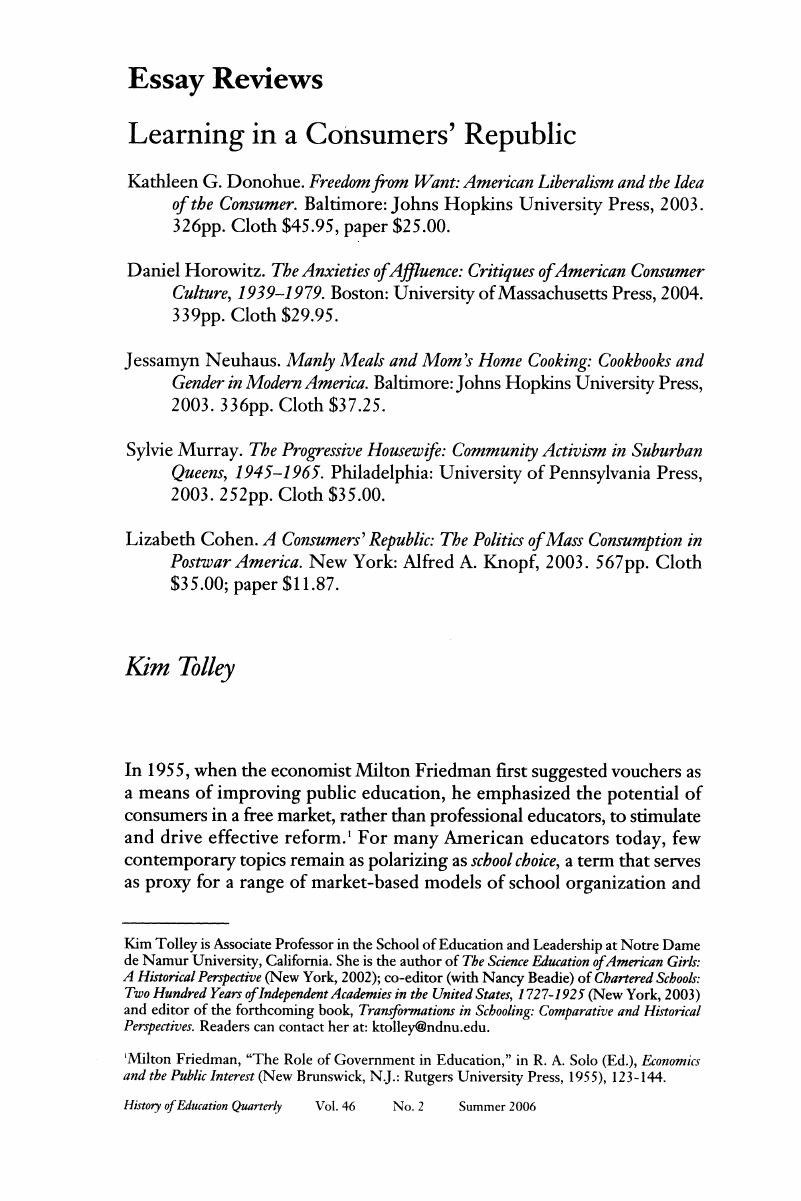Published online by Cambridge University Press: 24 February 2017

She is the author of The Science Education of American Girls: A Historical Perspective (New York, 2002); co-editor (with Nancy Beadie) of Chartered Schools: Two Hundred Years of Independent Academies in the United States, 1727-1925 (New York, 2003) and editor of the forthcoming book, Transformations in Schooling: Comparative and Historical Perspectives.
1 Friedman, Milton, “The Role of Government in Education,” in R. A. Solo (Ed.), Economics and the Public Interest (New Brunswick, N.J.: Rutgers University Press, 1955), 123–144.Google Scholar
2 See, Keynes, John Maynard, The General Theory of Employment, Interest, and Money (New York: Harcourt, 1965).Google Scholar
3 The Servicemen's Readjustment act of 1944, commonly known as the GI Bill of Rights, provided for college or vocational education for veterans of World War II.Google Scholar
4 For example, the most recent study only briefly discusses the years after the 1950s. See Milton Gaither, American Educational History Revisited: A Critique of Progress (New York: Teachers College Press, 2003).Google Scholar
5 Kozol, Jonathan, Savage Inequalities: Children in America's Schools (N.Y.: Harper Perennial, 1992).Google Scholar